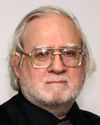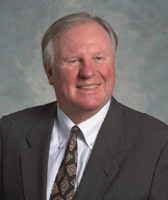 |
| KENNEDY |
In the 1970s, Kennedy and a small group of colleagues worked with DeLeuw, Cather & Co. and Kaiser Engineers to develop the "Subway Environmental Design Handbook" under contract to the U.S. Dept. of Transportation. As part of that project, Kennedy led the development of the Subway Environment Simulation software program.
Now in its fifth version, the program allows engineers to mathematically model aspects of the subway environment on a second-by-second basis. Worldwide, it is considered the standard tool for analysis and design of transit systems, providing air velocities, air temperatures and cooling loads for operating systems.
In the 1980s, Kennedy and his colleagues developed for the Singapore mass-rapid-transit system the concept of platform "screen doors," which prevent heat from the subway tunnels from entering station platforms.
In the 1990s, Kennedy contributed to the development of SOLVENT, a three-dimensional computational-fluid-dynamics (CFD) fire-ventilation program for road tunnels.
Recently, he played a key role in designing ventilation systems for projects including the No. 7 subway extension in New York City, the Purple Line subway in Los Angeles, the Channel Tunnel rail link between England and France, and transit systems in Hong Kong; Caracas, Venezuela; Delhi, India, and London.
“Surely he played a significant role in the history of PB as well as world civilization,” says Ersin Arioglu, founder of Yapi Merkezi, a Turkish design and construction group that worked with Kennedy on the Istanbul Strait Road Crossing project.
Kennedy was honored in March in New York City at the Fifth International Symposium on Tunnel Safety and Security, a biannual forum on current practice and emerging trends that was attended by more than 300 industry experts.
Symposium participants cited him for a “long and illustrious career in ventilation engineering of tunnels.” His lifetime body of work was termed “a shining example of wedding practice and theory in the design of tunnels,” the group said.
Kennedy was active in a wide range of professional organizations, including the American Society of Mechanical Engineers; the American Society of Heating, Refrigeration and Air-Conditioning Engineers, and the American Public Transportation Association.
He was chairman of both APTA's ventilation forum and the National Fire Protection Association's passenger-rail committee and also served, since 2007, as an advisory board member of the Columbia University Dept. of Mechanical Engineering.
Also, Kennedy had been an organizer, from 1985 to 2011, of the International Symposia on the Aerodynamics and Ventilation of Vehicle Tunnels.




Post a comment to this article
Report Abusive Comment